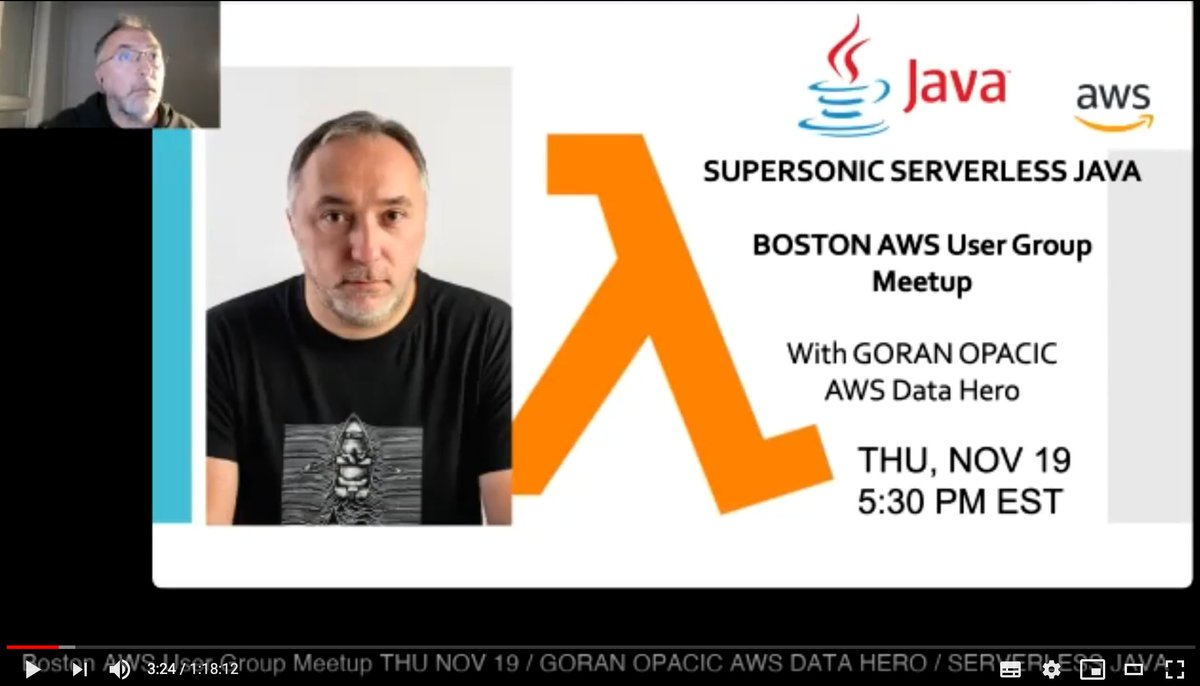
Goran Opacic
@goranopacic
Followers
2K
Following
11K
Statuses
5K
#AWS Data Hero and User Group Belgrade @awsugbelgrade leader, CEO of @Estehnet, Databases and Security, deep into #MySQL #Java #Docker and #HTTP since 0.9
Belgrade, Serbia
Joined February 2009
RT @dhh: Datadog renewal quotes are among the most radicalizing forces against enterprise SaaS. We liked the product, but no fucking way it…
0
42
0
RT @TeriRadichel: Because someone asked….no paywall :) ~~ Why I’m Releasing My Cloud Security Class Materials — for Free ~~ I used to teach…
0
2
0
RT @darkofabijan: 🚀 After 12+ years of building Semaphore, we're going open source in 30 days! This is a huge moment for us, and I couldn…
0
3
0
RT @jreijn: If you are running Java on AWS, be sure to checkout the improved Java on AWS immersion day workshop! I already saw quite some i…
0
2
0
SQL … hell yeah! Make something better or shut the fup
Firebase now has SQL. Yes, that's right! You can choose between NoSQL and SQL when it comes to managing your data. 🎥 On the next #FirebaseAfterHours, Peter and Nohe will be joined by Firebase product manager Tyler Crowe who will spill the beans on how you can use SQL in your mobile and web apps with Firebase Data Connect. Set a reminder →
0
0
1
RT @xstefank: I'm extremely happy to announce that the FULL FINAL online version of our Quarkus in Action book is now available for free as…
0
24
0
RT @MarcJBrooker: I had a great time talking to @thegeeknarrator about Aurora DSQL on the Geek Narrator podcast. We cover the design of Au…
0
13
0
mysql never disappoints
Concrete example of the difference between theory and practice in systems engineering: When we were designing the storage system at @Dropbox (called "magic pocket") every new PhD graduate would say it was dumb to use a thousand-node MySQL cluster to store the mapping from file chunks to their locations in a million-node storage cluster. Instead they'd point out that a distributed hash table is a much more "efficient" way of storing this mapping with no need for a database. This is fine in theory but in practice you need to 1. run verifier jobs that walk over your indexes and make sure all the data is in the right place 2. dynamically adjust the amount of data on each node or cluster due to hardware issues or data center migrations 3. run queries over the metadata for auditing and forecasting and all manner of things 4. have a really simple codepath for committing a write to the system and not much is simpler than writing a single row to a DB. It turns out the simpler approach is better because the simpler approach works and can be maintained. All this stuff can be learned but it's much much easier to learn in an environment where you run into constraints on a daily basis.
0
0
2
RT @VKazulkin: I decided to extend my series "#Java web application on #AWS Lambda" series with examples using @QuarkusIO framework (https:…
0
4
0
RT @aws_cb_blogs: New post by James Maina. Getting started on MOCO, the MySQL Operator for Kubernetes Part 1 #k8s…
0
1
0







